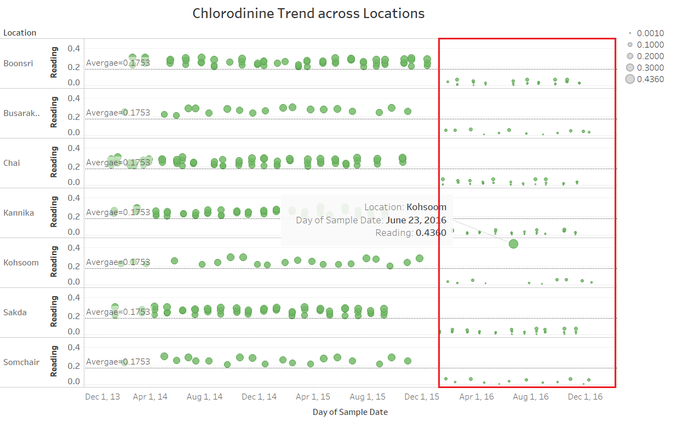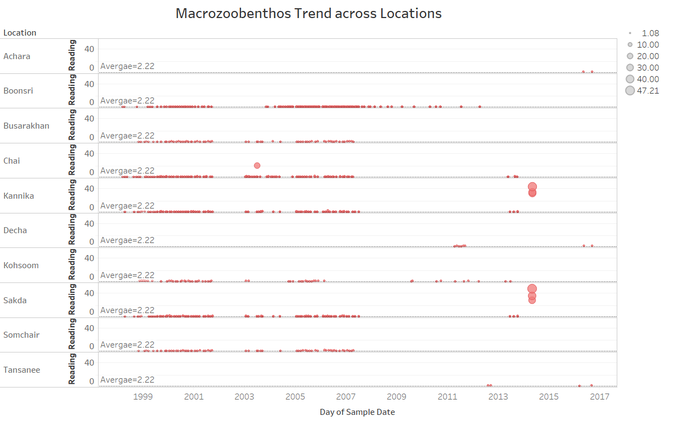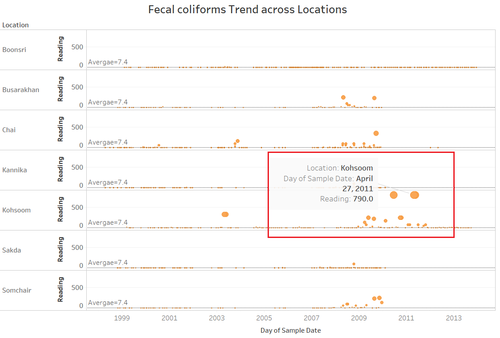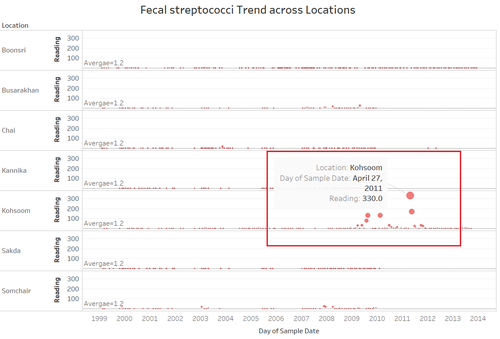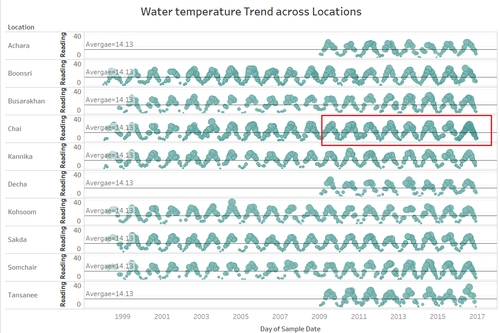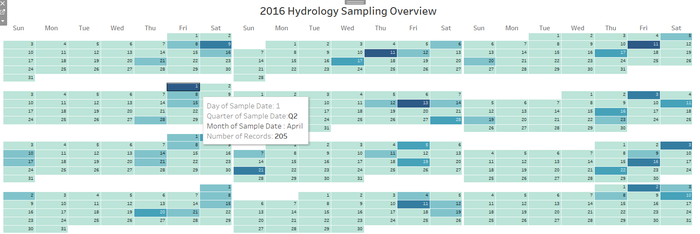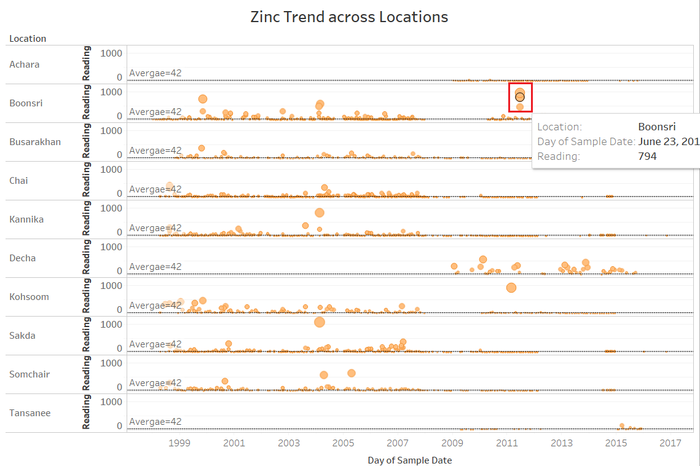ISSS608 2017-18 T3 Assign Alagu Alagappan Q2
|
|
|
|
|
|
Contents
REAL SCENARIO AND CALL FOR ACTION
The different kinds of anomalies noticed in the data given by the hydrology raises concern on the sampling strategy and completeness of the data. The anomalies have been classified broadly into three categories:
1. Anomalies in Chemical measure across locations
2. Anomalies in Chemical Measure across years
3. Inconsistency in Hydrology Data across locations and years
4. Unclear and Missing Data Pattern
Anomalies in Chemical measure across locations
Chloridine stands out :
As seen in Question 1,the Chloridine levels over the past three years has been showing a decreasing trend in the year 2016 compared to years 2014 and 2015, but there seems an anomaly shown below. The reading in the Kohsoom region on the June 23 2016 shows an above an average reading of 0.4360 µg/l. Kohsoom being close to the dumping area of the factory outlet , this creates an thought upon whether on June 23rd the factory released any chloridine pollutants that dint dilute in water and caused an abnormal reading.
May Macrozoonbenthoos concern in Kannika and Sakda:
The chemical Macrozoonbenthoos peaked 20 times higher than the average value across all the locations in Kannika and Sakda on May 8 2014. This acts as an anomaly to the pattern observed across different locations in the years.the reading observed in May 2014 is around 40 mg/L.
Anomalies in Chemical Measure across years
Fecal Combo Fears in Kohsoom :
The fecal coliforms and fecal streptococci shows a distinctive anomaly of higher readings in April 2011 in the Kohsoom region at the same time. The fecal streptococci reading was around 330 mg/L and 790 mg/L for the fecal coliforms.The reading is above average value by nearly 300 times for fecal streptococci and nearly 100 times than average for fecal coliforms.
Inconsistent Data Collection across locations and years
1. Chai Region gets more focus in 2016: The number of readings taken in Chai in 2016 shows the inconsistency of the data collected by the hydrology department across the preserve. The number of readings is about 5 times more than the number of readings taken by the department throughout the time period. This remains a mystery of how the number of records has been recorded in each location and year.
2.Data Collection over the locations:The data collected by the hydrology department is not consistent by the location as shown below for all the chemicals together. There has been three categories of data collection in location wise:
1. Achara, Decha and Tansanee doesn’t have any data recorded from the years 1998 – 2008.
2. Boonsri, Chai and Kanika has almost all the data for the years 1998-2016.
3. Kohsoom, Sakda and Somchair misses some data at the beginning of 1998.
3.Data Collection over the years:The data above also shows that across the years the data is recorded in an uneven manner throughout the period for each chemical and location.By the calendar plot , the missing data pattern is very evident by day wise in each year. Only year 2016 has the data for all the days recorded by different measures or chemicals. This creates an concern for the data insights to be drawn with the missing data not giving any inference about the chemical contamination in the preserve.
Unclear and Missing Sample Date:
The sample date given by the chemical recordings is unclear as it has multiple readings on the same day as shown below in the Zinc trend in Boonsri. The June 23rd readings has multiple values with wide difference in the readings, as the timestamp of the data is not given it doesn’t clearly state the actual scenario of the chemical contamination.

